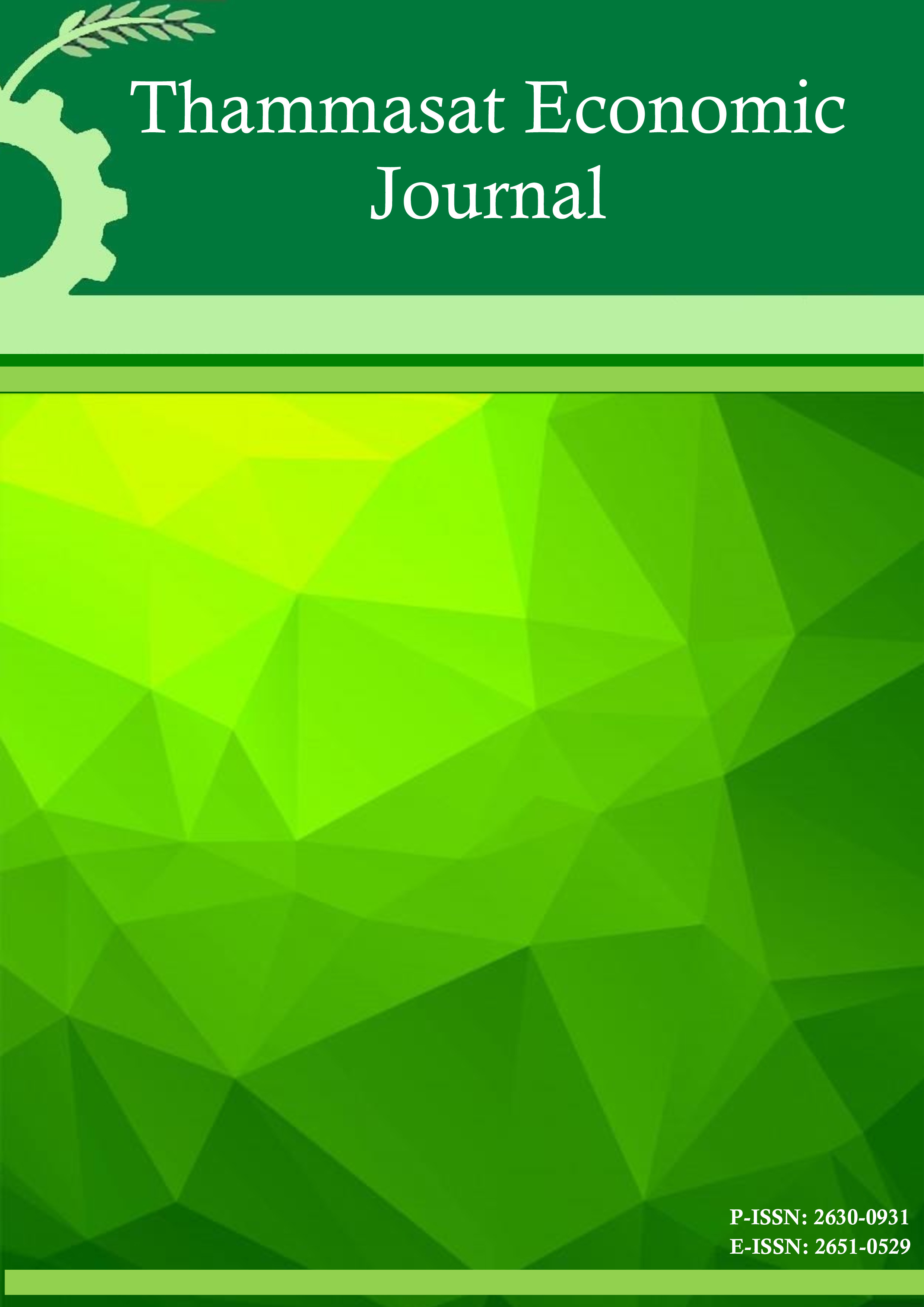Remanufacturing and the 3Rs in Japan: Lessons for Thailand
Abstract
This survey first illustrates that policies making waste disposal relatively expensive have been key determinants of the benefits of remanufacturing and the closely related activities of waste reduction, reuse, and recycling (the 3Rs) in Japan. These policies have generally been product specific and sought to compensate for the failure of private markets to force polluters to bear the costs of negative externalities (costs) imposed or reward those who impart positive externalities (benefits) by reducing pollution through the 3Rs or remanufacturing. Notably they have not discriminated much among different types of firms. Second, the profitability of remanufacturing or more general reuse is found to vary among industries or products, depending on the technologies and consumer preferences involved. Original equipment manufacturers (OEMs) in agricultural and construction machinery and of copiers and related office equipment and services are examples of firms that find narrowly defined remanufacturing relatively profitable. In contrast, other OEMs in non-metallic minerals find that reuse or remanufacturing is not generally possible, largely because of the nature of their products but they have substantial and increasing recycling activities. In contrast to OEMs, who are by definition manufacturers, trading is the main activity of most independent business reuse companies (IBRCs). Some IBRCs, for example in used motorcycles, find substantial remanufacturing to be profitable, while reuse (e.g., clothing, books, software, personal computers) or recycling (e.g., automobile parts) are more efficient for other products. As resources become scarcer and more expensive, markets will gradually reinforce the incentives created by Japan’s policies. There are already substantial opportunities for developing economies like Thailand to benefit from emulation of the principles underlying Japan’s policies. Japan’s national and local governments, as well as its firms, recognize this fact and are actively disseminating knowledge related to their experience with remanufacturing and the 3Rs to neighboring Asian economies such as Thailand.
References
2.Duffield, John S. and Brian Woodall (2011), “Japan’s New Basic Energy Plan”, Energy, 39(6), 3741–3749.
3.Financial Services Agency (2011), Yuuka Shouken Houkokusho (Financial Statement Report), accessed for firms in Table 1, EDINET (Electronic Disclosure for Investors' NETwork), https://info.edinet-fsa.go.jp/E01EW/BLMainController.jsp, accessed August.
4.Gutowski, Timothy, Cynthia Murphy, David Allen, Diana Bauer, Bert Bras, Thomas Piwonka, Paul Sheng, John Sutherland, Deborah Thurston, Egon Wolff (2005), Environmentally benign manufacturing: Observations from Japan, Europe and the United States, Journal of Cleaner Production, 13(1), 1-17.
5.Kerr, Wendy and Chris Ryan (2001), “Eco-efficiency gains from remanufacturing: A case study of photocopier remanufacturing at Fuji Xerox Australia”, Journal of Cleaner Production, 9(1), 75-81.
6.Langella, Ian M. (2007), “Planning Demand-Driven Disassembly for Remanufacturing”, Dissertation Universität Magdeburg, Wiesbaden: Deutsche Universitäts-Verlag.
7.Lee, Hyun Bok, Nam Wook Cho, and Yoo Suk Hong (2010), "A hierarchical end-of-life decision model for determining the economic levels of remanufacturing and disassembly under environmental regulations", Journal of Cleaner Production, 18(13), 1276-1283.
8.Lund, Robert T and William M. Hauser (2010), “Remanufacturing-An American Perspective” https://www.reman.org/Papers/ICRM%20APRA%20version.pdf.
9.Matsumoto, Mitsutaka (2009), “Business frameworks for sustainable society: a case study on reuse industries in Japan”, Journal of Cleaner Production, 17(17), 1547-1555.
10.Ministry of Economy Trade and Industry [Working Group on Enhancing International Recycling, Waste Prevention and Recycling Sub-committee Industrial Structure Council ] (2004), “Toward a Sustainable Asia Based on the 3Rs”, https://www.meti.go.jp/policy/recycle/main/english/council/reports/report_sutainableasia_en.pdf
11.Ministry of Economy Trade and Industry (2011), Home page on 3Rs (Reduce, Reuse, Recycle) Policy, https://www.meti.go.jp/policy/recycle/main/english/index.html.
12.Ministry of Finance (2010), Hojinkigyou Toukei Nenpou Tokushu (Special Issue on Annual Corporation Statistics), Zaisei Kinyu Toukei Geppou (Ministry of Finance Statistics Monthly), Nos. 702 (October, in Japanese).
13.Nakamaru, Hironobu (2010), "Trends and future issues of environmental management in Japan", Asian Business Management, 9(2), 189-207.
14.Nakamura, Masao, Takuya Takahashi, and Ilan Vertinsky (2001), "Why Japanese Firms Choose to Certify: A Study of Managerial Responses to Environmental Issues", Journal of Environmental Economics and Management, 42(1), 23-52.
15.Oakdene Hollins (2004), “Remanufacturing in the UK: a significant contributor to sustainable development?” North Yorkshire: The Resource Recovery Forum.
16.Organisation for Economic Co-operation and Economic Development (2010), Environmental Policy Reviews: Japan 2010. Paris OECD.
17.Seitz, Margarete A. (2007), “A critical assessment of motives for product recovery: the case of engine remanufacturing. Journal of Cleaner Production, 15(11-12), 1147-1157.
18.Sundina, Erik and Bert Bras (2005), “Making functional sales environmentally and economically beneficial through product remanufacturing”, Journal of Cleaner Production 13(9), 913-925.
19.Tokyo Stock Exchange (2011), “Summary of Earnings Digests by Listed Companies”, downloaded from https://www.tse.or.jp/english/market/data/tanshin/index.html in August.
20.Toyo Keizai (various years), Kaigai Shinshutsu Kigyo Soran (A Comprehensive Survey of Firms Overseas), CD-ROMs with data from 1990-2010 issues (data for 1988/9-2008/9). Tokyo: Toyo Keizai (in Japanese).
21.World Trade Organization, Communication from the United States (2005), “Negotiating NTBs Related to Remanufacturing and refurbishing”, TN/MA/W/18/Add.11.
22.Zhang, B., Bi, J., Yuan, Z., Ge, J., Liu, B., Bu, M., 2008. Why do firms engage in environmental management? An empirical study in China. Journal of Cleaner Production 16(19), 1036-1045.
23.Zhang, Bing, Shuchong Yang, Jun Bi (forthcoming), “Enterprises’ willingness to adopt/develop cleaner production technologies: an empirical study in Changshu, China”, Journal of Cleaner Production, available online 30 December 2010.
24.Zhu, Q.H., Sarkis, J., Lai, K.H (2007). Green supply chain management: pressures, practices and performance within the Chinese automobile industry. Journal of Cleaner Production 15(11-12), 1041-1052.










